How Much Protein Do I Need
Published:
How much protein do I need? Many people who are health-conscious ponder the amount of protein they need, and the answer depends on a few elements. In this blog post, we'll delve into how to calculate your optimal daily protein intake for various goals and lifestyles according to individual factors.
Contents:
- Daily Protein Requirements for Healthy Adults
- Factors Affecting Individual Protein Needs
- Importance of Adjusting Intake Based on Activity Level
- Building Muscle and Bulking with Protein
- Losing Weight While Prioritizing Protein Intake
- High-Quality Animal-Based Protein Sources
- Plant-Based Protein Options and Combinations
- How Much Protein Do I Really Need?
- Is 100 Grams of Protein a Day Too Much?
- Is 200 Grams of Protein Too Much?
- Is 250 Grams of Protein Too Much?
- Conclusion
We'll explore factors affecting individual protein needs and discuss the importance of adjusting your intake based on activity level. You'll also learn how to build muscle effectively with optimal timing and frequency of consuming high-quality proteins rich in essential amino acids like leucine.
If you're curious about how much protein your body needs while slimming down, we've got the answers. We will provide guidance on balancing macronutrients during your weight loss journey as well as tips for incorporating high-quality animal-based or plant-based proteins into meal planning to prevent deficiency and support muscle health.
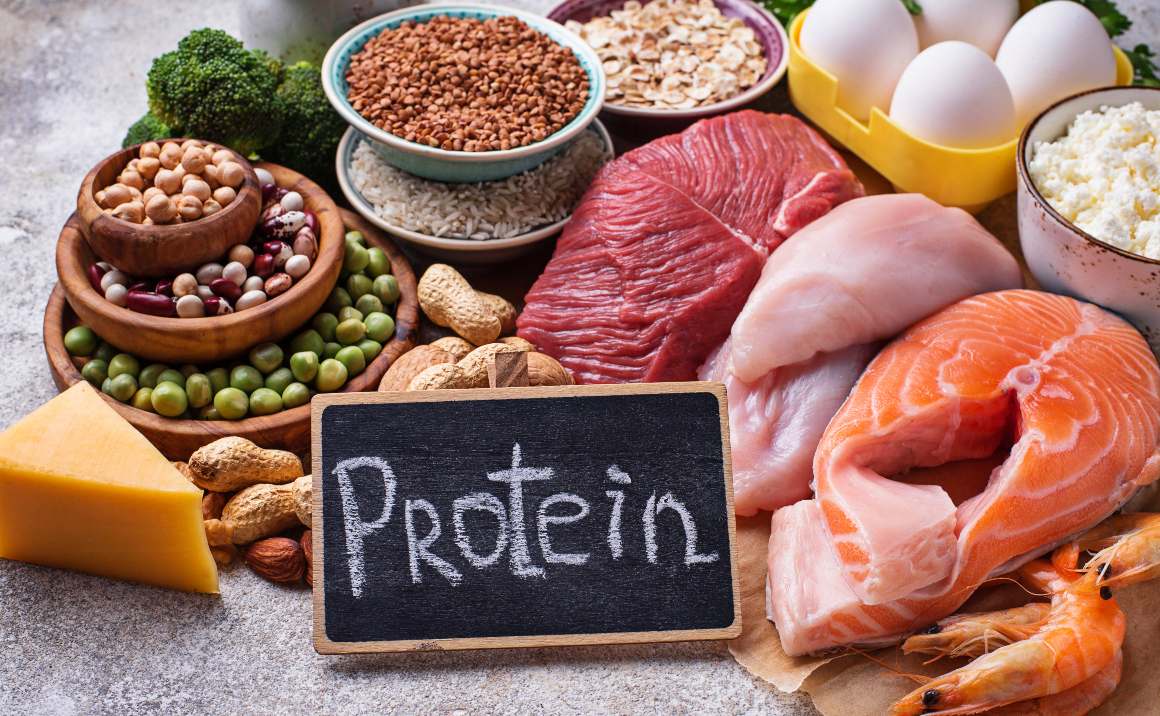
Daily Protein Requirements for Healthy Adults
Most healthy adults over 19 years old should aim to get between 10-35% of their daily calories from protein. The optimal amount of protein required for building muscle remains a topic of debate among experts, but consuming at least 1.6 grams (g) per kilogram (kg) of body weight per day is recommended for those engaged in resistance training exercises. In this section, we will discuss the factors affecting individual protein needs and the importance of adjusting intake based on activity level.
Factors Affecting Individual Protein Needs
Individual protein needs vary according to age, sex, weight, physical activity level and overall health status. For example:
- Pregnant or breastfeeding women: They require more protein to support fetal growth and milk production (source). Consult with a medical professional about dietary needs during pregnancy or lactation for optimal nutrition.
- Athletes and active individuals: People who engage in regular exercise or sports may need additional amounts due to increased muscle breakdown during workouts (source). As mentioned earlier, at least 1.6 g/kg/day is recommended if you participate in resistance training exercises.
- Elderly people: Older adults often experience sarcopenia - a loss of muscle mass that occurs naturally with aging - which can increase their risk for falls and fractures (source). Consuming adequate protein can help slow down this process and maintain muscle function.
- Individuals with specific health conditions: Certain medical conditions, such as kidney disease or liver dysfunction, may require adjustments in protein intake. Always consult your healthcare provider for personalized recommendations based on your unique situation.
Importance of Adjusting Intake Based on Activity Level
The amount of protein you need depends largely on how active you are. For sedentary individuals who do not engage in regular exercise, the Recommended Dietary Allowance (RDA) is 0.8 g/kg/day (source). However, if you're an athlete or regularly participate in resistance training exercises to build muscle mass and strength, increasing your daily intake to at least 1.6 g/kg/day is advised.
In addition to adjusting overall protein consumption based on activity level, it's also crucial to distribute intake evenly throughout the day for optimal results. A study published in The American Journal of Clinical Nutrition found that consuming a moderate amount of high-quality protein at each meal promotes better muscle synthesis than skewing most consumption towards dinner (source). Aim for approximately 20-30 grams per meal to maximize benefits.
For optimal results, incorporate a mix of animal and plant-based proteins into your meals to reach the recommended 20-30 grams per meal without exceeding calorie limits.
Aside from protein, other essential elements of a successful fitness program include proper rest, an adequate intake of vitamins and minerals, and sufficient hydration. To maximize your fitness gains, ensure you get sufficient rest and nourish your body with a balanced diet full of vitamins and minerals while staying hydrated.
Now that we've covered daily protein requirements for healthy adults, let's explore how much you need when focusing on building muscle or bulking up.
The amount of protein needed on a daily basis for grown-ups in good health can differ depending on individual elements, like physical activity level and body weight. For optimum muscle development, the right timing and frequency of intake of key amino acids like leucine should be taken into account.
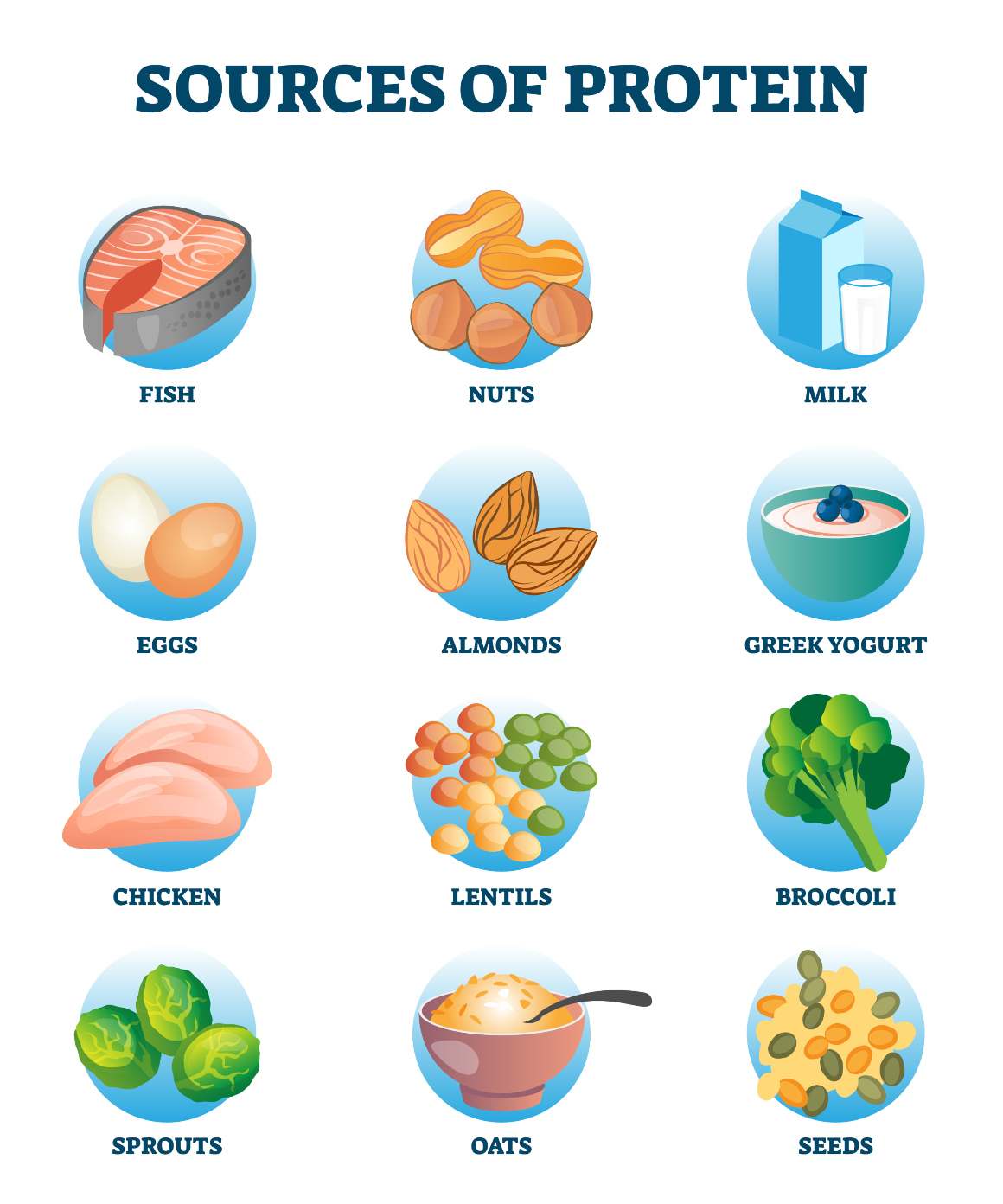
Building Muscle and Bulking with Protein
For individuals looking to build muscle or bulk up, consuming higher amounts of protein can be beneficial. A meta-analysis conducted in 2023 concluded that consuming at least 1.6 g/kg/day results in small increases in lean body mass for young individuals engaged in resistance training exercises. Consuming up to 2 g/kg/day is generally considered safe without any side effects.
Optimal Timing and Frequency of Protein Consumption
The timing and frequency of protein consumption play a crucial role in maximizing muscle growth and recovery. Research suggests that evenly distributing your daily protein intake across multiple meals may provide the best results for muscle synthesis (source). A high-quality source of protein should be consumed every three to four hours, including post-workout meals, for optimal muscle growth and recovery.
A popular strategy among athletes is the consumption of fast-digesting proteins like whey immediately after exercise, as it has been shown to promote greater muscle gains compared to slower-digesting proteins such as casein (source). However, recent research indicates that total daily protein intake might be more important than specific timing strategies when it comes to building muscle mass.
Role of Essential Amino Acids Like Leucine
Essential amino acids (EAAs) are the building blocks of proteins that our bodies cannot produce and must be obtained through dietary sources. Among the nine EAAs, leucine plays a particularly important role in stimulating muscle protein synthesis. Foods rich in leucine include chicken, beef, fish, soybeans, and dairy products like milk and whey protein.
To optimize muscle growth during resistance training exercises, aim to consume at least 2-3 grams of leucine per meal or snack. Achieve muscle growth while weightlifting by consuming a minimum of 20-30g of high-grade protein per meal, depending on the source.
- Chicken: A 100g serving contains roughly 2.5g of leucine and 31g of protein.
- Fish: Depending on the type of fish, a 100g serving may provide between 1.5-2g of leucine and around 20-25g of protein.
- Soybeans: One cup (180 g) cooked soybeans offers about 3g of leucine and over 20g of protein.
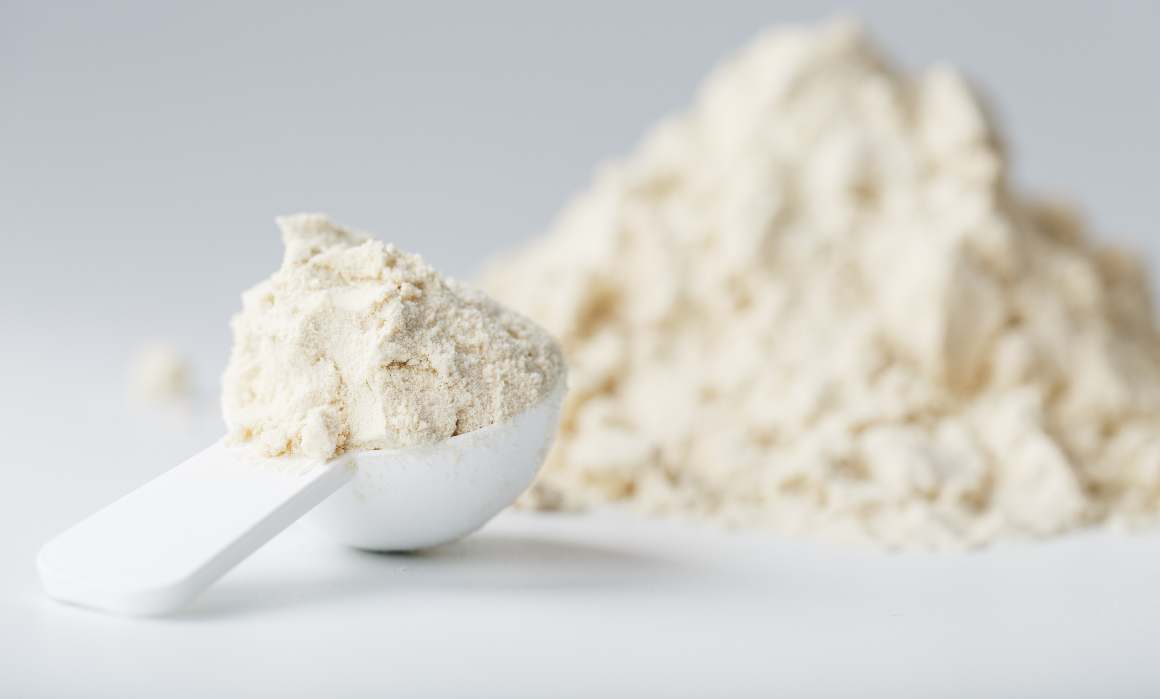
Dairy-Based Sources: Yogurt, Cottage Cheese & Whey Protein
Dairy products such as yogurt, cottage cheese & whey protein are also excellent sources of leucine and high-quality proteins. A 200g serving of Greek yogurt provides around 2.5g of leucine and 20g of protein, while a similar portion size for cottage cheese offers approximately 2g of leucine and 17g of protein.
Whey protein supplements can be an effective way to increase your daily leucine and protein intake without adding too many extra calories or fat. One scoop (30 g) typically contains about 2.5g of leucine and 24-25 grams of protein.
Including these tactics in your everyday regimen can help you construct muscle mass and bulk up with the proper amount of protein consumption. Remember that individual needs may vary based on factors such as age, sex, weight, activity level, and fitness goals; consult with a registered dietitian or sports nutritionist for personalized guidance tailored to your specific circumstances.
Maximizing muscle growth and bulking requires knowledge of when and how often to consume protein, as well as the significance of key amino acids such as leucine. To support weight loss goals while still prioritizing adequate protein intake, a balanced macronutrient approach should be taken along with tips for incorporating high-quality proteins into meal planning.
Losing Weight While Prioritizing Protein Intake
Consuming sufficient protein can help reduce cravings for unhealthy foods and may lead to healthier eating habits overall. Consuming sufficient amounts throughout the day has been shown to reduce hunger levels at subsequent meals, which may contribute towards healthier eating habits overall.
Balancing Macronutrients during Weight Loss Journey
When trying to lose weight, it's essential not only to focus on reducing calorie intake but also ensuring that you consume a balanced mix of macronutrients (protein, carbohydrates, and fats). A higher proportion of protein in your diet is beneficial for weight loss as it helps maintain lean body mass while shedding fat. The ideal ratio varies from person to person; however, a general guideline would be aiming for 40% carbohydrates, 30% protein, and 30% fats.
- Carbohydrates: Opt for complex carbs such as whole grains (brown rice or quinoa), fruits with low glycemic index (berries or apples), vegetables rich in fiber (broccoli or spinach).
- Fats: Choose healthy unsaturated fats found in avocados, nuts/seeds like almonds/walnuts/chia seeds/flaxseeds/sunflower seeds/pumpkin seeds/hemp hearts/brazil nuts/cashews/pecans/macadamias/hazelnuts/filberts/pine nuts/wheat germ/oat bran/coconut oil/red palm oil/grapeseed oil/avocado oil/macadamia nut oil/almond butter/cashew butter/tahini/sesame seed paste/etc., and oily fish (salmon or mackerel).
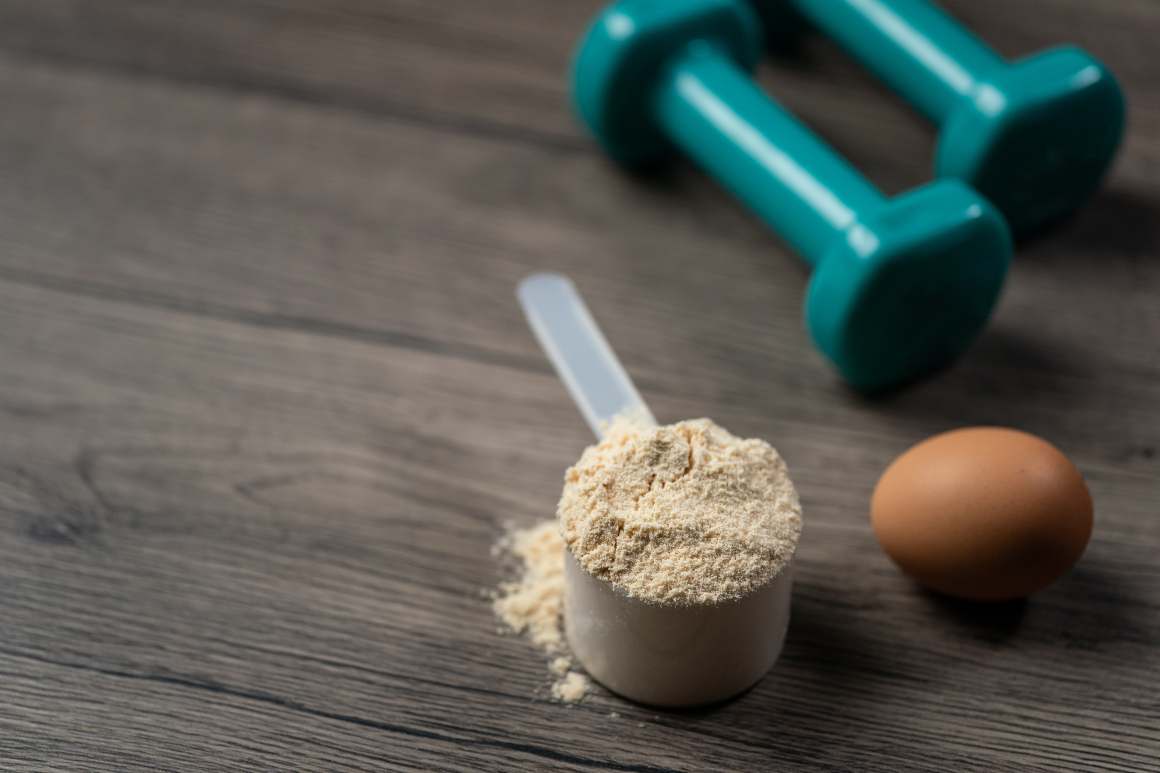
Tips for Incorporating High-Quality Proteins into Meal Planning
Meeting your daily protein requirements can be challenging, especially when trying to lose weight. Here are some tips to help you incorporate high-quality proteins into your meal planning:
- Eat smaller, more frequent meals: Instead of consuming three large meals a day, try eating five or six smaller ones that include protein sources. This approach helps maintain stable blood sugar levels and keeps hunger at bay.
- Vary your protein sources: Include a mix of animal-based and plant-based proteins in your diet to ensure you're getting all the essential amino acids needed for optimal health.
- Add lean meats as toppings: Use grilled chicken breast, turkey slices, or even tuna as toppings on salads instead of relying solely on dressings for flavor.
- Incorporate legumes in dishes: Beans and lentils are excellent plant-based protein options that can easily be added to soups, stews, salads or used as a base for veggie burgers.
Maintaining an adequate intake of high-quality proteins while losing weight is crucial not only for preserving muscle mass but also promoting satiety between meals. By incorporating these strategies into your daily routine alongside regular physical activity such as resistance training exercises, cardio workouts like running, swimming, cycling, walking, hiking, stair climbing, rowing, elliptical machine usage, treadmill sessions, spin classes, dance lessons, kickboxing, aerobics, Zumba, Pilates, yoga, tai chi, martial arts, sports participation, etc., you'll be well on your way towards achieving a healthier, leaner physique.
Maintaining a healthy balance of macronutrients is essential for successful weight loss. To ensure successful weight loss, it is important to consume adequate amounts of high-quality proteins. Let's now consider some animal-derived protein sources that can aid in attaining this objective.
High-Quality Animal-Based Protein Sources
High-quality proteins contain all nine essential amino acids, which cannot be synthesized by our bodies and must therefore be obtained through dietary sources. Animal-based proteins tend to have high concentrations, making them preferable choices when trying to meet your daily requirements efficiently. Some excellent options include lean meats, yogurt, fish, cottage cheese, and whey protein.
Benefits of Incorporating Lean Meats Like Turkey
Lean meats, such as turkey or chicken breast without the skin, are packed with protein while being low in saturated fats. This makes them an ideal choice for individuals looking to build muscle or lose weight without consuming excessive amounts of unhealthy fats. A 100-gram portion of cooked turkey breast has approximately 29 grams of protein and only 1 gram of fat.
- Turkey is also rich in vitamins B6 and B12 that help maintain healthy brain function and energy levels.
- The mineral selenium found in turkey supports a strong immune system.
- Tryptophan present in turkey aids serotonin production which promotes better sleep quality.
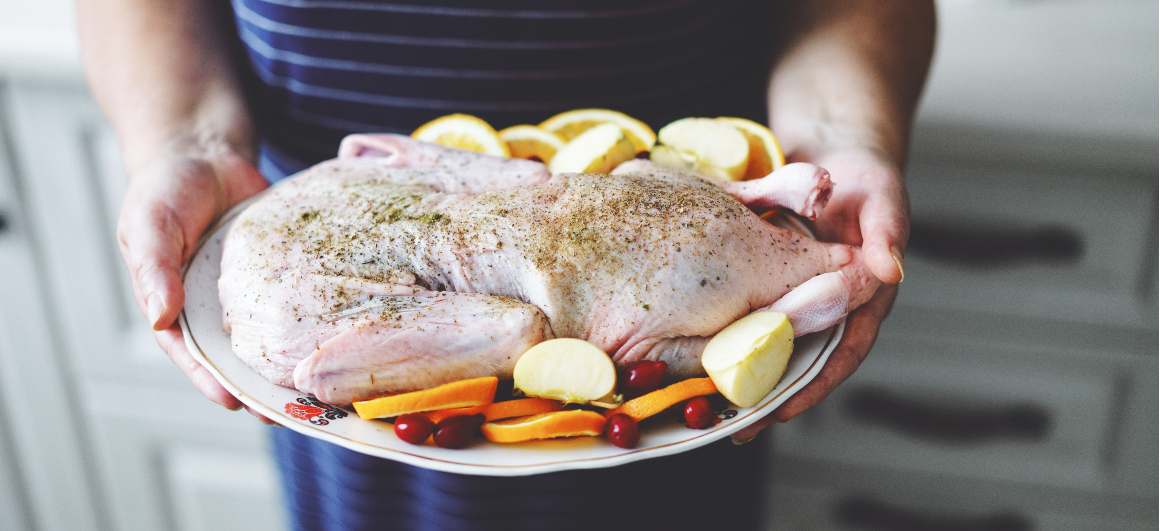
Fish Options: Tilapia or Sole
Fish like tilapia or sole provide another source of high-quality animal-based protein that can easily fit into a balanced diet plan due to their mild taste profile. These types of fish are known for their low mercury content compared to other seafood varieties such as tuna or swordfish (FDA guidelines on eating fish). A typical serving size (85g) offers around 21 grams of protein with minimal fat content.
- Omega-3 fatty acids found in fish support brain and heart health.
- Fish is a beneficial source of vitamin D, which helps to strengthen bones through the absorption of calcium.
Dairy-Based Sources: Yogurt, Cottage Cheese, and Whey Protein
Dairy products are not only rich in protein but also provide essential nutrients like calcium, potassium, and vitamins A & D. When selecting dairy-based protein sources, pick low-fat or fat-free options to keep saturated fat intake down while still taking advantage of the quality proteins they provide.
- Yogurt: Greek yogurt is an excellent choice due to its higher protein concentration compared to regular yogurt. A 170g serving contains around 17 grams of protein with minimal added sugars if you choose plain varieties. It can be enjoyed as a snack on its own or mixed with fruits and nuts for additional flavor and nutrition benefits.
- Cottage Cheese: This versatile cheese offers approximately 14 grams of protein per half-cup (113g) serving size. It's low in calories yet filling due to its high water content making it perfect for weight loss diets or post-workout meals when combined with fresh fruit or whole-grain crackers.
- Whey Protein: Derived from milk during the cheese-making process (Medical News Today - Whey Protein Overview) whey has become popular among athletes looking to supplement their daily intake. It's quickly absorbed by the body, making it an ideal post-workout option for muscle recovery. Whey protein powder can be easily added to drinks, meals and snacks for a convenient source of protein.
When incorporating animal-based proteins into your diet plan, aim to consume high-quality sources that provide essential nutrients while minimizing unhealthy fats. By choosing lean meats like turkey, fish options such as tilapia or sole, and dairy products including yogurt and cottage cheese you'll not only meet your daily protein requirements but also support overall health through balanced nutrition.
Turkey is a great way to obtain high-quality animal proteins for your diet. Plant-based protein options and combinations offer another way to get the necessary nutrients for optimal health.

Plant-Based Protein Options and Combinations
For those following plant-based diets or seeking alternative options beyond animal-derived foods, it is still possible to obtain adequate amounts of protein. However, you may require larger portions due to their lower concentration profiles. By combining different plant-based sources, you can achieve a complete amino acid profile necessary for optimal health and muscle growth. In this section, we will explore various high-quality plant-based proteins and effective combinations that can help meet your daily requirements.
Combining Grains and Legumes for a Complete Amino Acid Profile
Grains and legumes are both rich in essential nutrients but often lack one or more of the nine essential amino acids required by our bodies. When combined strategically, they form what is known as a complete protein, providing all the necessary building blocks for proper muscle function and repair.
- Rice and beans: This classic combination provides all nine essential amino acids while also being an excellent source of fiber. You can enjoy rice with black beans, kidney beans, chickpeas or lentils in various dishes like burritos or stir-fries.
- Pasta with peas: Whole-grain pasta paired with green peas not only offers a delicious meal option but also ensures you get enough lysine - an important amino acid typically lacking in grains.
- Hummus on whole wheat bread: Made from chickpeas (legume) blended with tahini (sesame seed paste), hummus spread on whole wheat bread (grain) creates another tasty way to consume complementary proteins together.
Soy Products as High-Quality Plant-Based Proteins
Soy products are unique among plant-based protein sources because they contain all nine essential amino acids in sufficient amounts. As such, soy products offer a great alternative to animal-based proteins for those seeking adequate daily nutrition. Some popular soy-based options include:
- Tofu: Made from coagulated soy milk, tofu is a versatile ingredient that can be used in savory and sweet dishes alike. It comes in various textures, such as silken, soft or firm, allowing you to experiment with different recipes.
- Tempeh: A fermented soybean product originating from Indonesia, tempeh has a nutty flavor and chewy texture that works well in stir-fries or sandwiches.
- Edamame: These immature green soybeans can be boiled or steamed and eaten as a snack or added to salads for an extra boost of plant-based protein.
- Soy milk: As one of the most nutritionally complete non-dairy milks available, soy milk provides not only high-quality proteins but also calcium and other essential nutrients found in cow's milk.
In addition to these whole food sources of plant-based proteins, there are also many commercially available powders derived from plants like pea protein isolate (research suggests it may promote muscle growth similarly to whey) and hemp seed powder (rich source of omega-3 fatty acids).
It is essential to remember that while plant-based diets may be able to supply adequate protein, they might necessitate meticulous organization and a diversity of sources in order to guarantee satisfactory consumption. By blending a range of grains, beans, soy items and other nutritionally-dense choices into your diet regimen, you can easily satisfy your daily protein needs in an enjoyable as well as nourishing way. This can help prevent deficiency and build muscle, promoting muscle growth and muscle health, regardless of body weight.
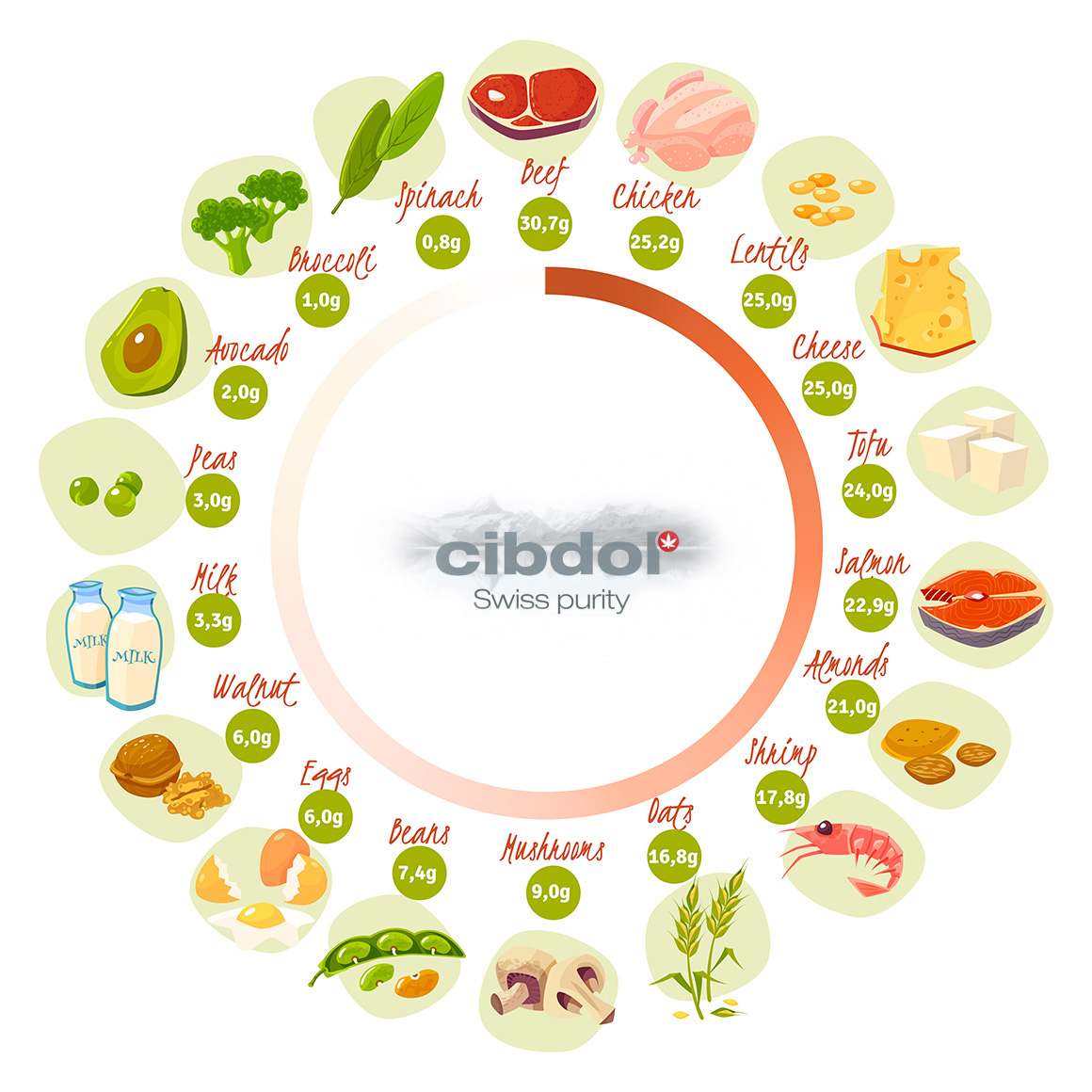
How Much Protein Do I Really Need?
Generally, a daily intake of 0.8 grams per kilogram of body weight is recommended for healthy adults. However, athletes or those engaging in intense physical activities may require more.
Is 100 Grams of Protein a Day Too Much?
For most individuals, consuming 100 grams of protein per day is not excessive if it aligns with their specific needs and goals. It's essential to consider your unique circumstances and consult with a healthcare professional or registered dietitian to determine the optimal amount for you.
Is 200 Grams of Protein Too Much?
A daily intake of 200 grams can be excessive for some people but might be appropriate for others based on individual factors like muscle mass and exercise intensity. Always consult with a healthcare professional before significantly increasing your protein consumption to avoid potential health risks.
Is 250 Grams of Protein Too Much?
Consuming 250 grams of protein per day could be excessive for most individuals unless they have an exceptionally high muscle mass or engage in extreme physical activities regularly. Excessive amounts may lead to kidney strain or other health issues; thus, consultation with a healthcare professional is advised.
It's important to note that protein is an essential nutrient that provides the body with dietary protein and essential amino acids. These amino acids are the building blocks of muscle growth and repair. Consuming protein-rich foods is crucial to prevent deficiency and maintain overall health.
When it comes to protein intake, it's best to focus on consuming a balanced diet that includes a variety of protein sources, such as lean meats, fish, eggs, dairy, legumes, and nuts. By doing so, you can ensure that you're meeting your body's protein needs while also getting other essential nutrients.
Conclusion
Grasping the quantity of protein needed for a sound way of life is imperative. The amount of protein you require can differ depending on variables like activity level, muscle mass, and weight loss aims. It's important to adjust your intake accordingly and incorporate high-quality sources of protein into your diet.
For those aiming to increase muscle or slim down, consuming protein at the right time and frequency can be beneficial. Animal-based sources like lean meats, fish, and dairy products, as well as plant-based options like soy products, are all great choices for protein-rich foods.
If you're unsure about how much dietary protein you need or want more guidance on incorporating it into your diet in a healthy way, consider consulting with a nutritionist or dietician. They can help you determine the right amount of essential amino acids and amino acids for your body weight and muscle growth goals. Additionally, consuming enough protein can help prevent deficiency.








